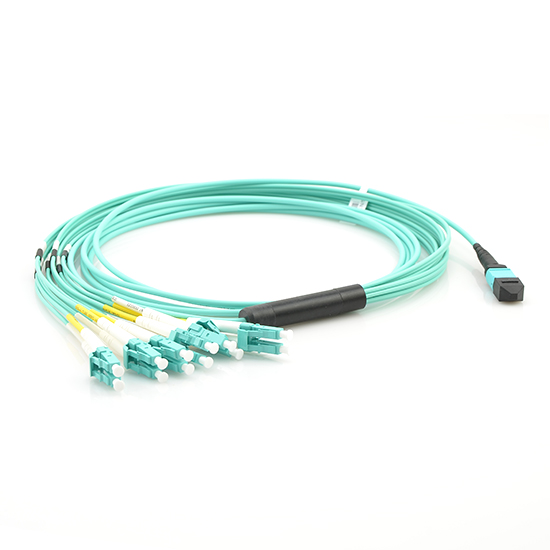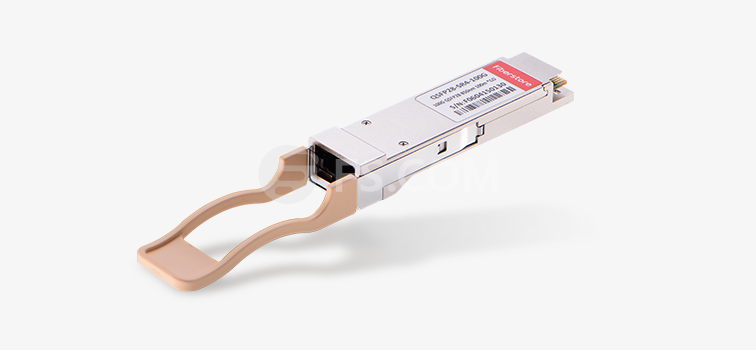MTP fiber cable in data center becomes increasingly popular in data center with the wide deployment of 40G and 100G network. It is common that 40G and 100G network usually based on 12-fiber MTP networking system. However, not all the 12 fibers of MTP cable are used.
There are usually 4 fibers left unused, if you are using a 12-fiber MTP cable to transmit 40G with QSFP+ module or 100G with QSFP28 module. The following shows how 12-fiber MTP fiber cable works when it is used to be connected with 40Gbase-SR4 QSFP+ module. If more 12-fiber MTP cables are used, more optical fibers will be wasted. As IEEE standards like 40GBASE-SR4 and 40GBASE-SR10 uses only 8 fibers for dual-way transmission, manufacturers provide new versions of MTP fiber cable which contains only 8 optical fibers but still used the standard MTP interfaces.
Network built with 8-fiber MTP system can transmit the same data with less cost and higher density compared with 12-fiber MTP system. All fiber will be 100% utilized in base-8 MTP products. It could be a cost-effect solution for both 40G to 40G transmission and 40G to 10G transmission. 8-fiber MTP trunk cables and 8-fiber MTP-LC harness cable are already provided in the market. There are also rack designed 8-Fiber MTP breakout panels for 40G to 10G applications.
 |
 |
| MTP-LC Harness Cable | MTP-LC 40/100G Breakout Panel |
Convert 12-Fiber MTP to 8-Fiber MTP Cabling System
However, most MTP cabling systems are based on 12-fiber or 24-fiber MTP system, especially for backbone cabling. MTP conversion cables are provided in the market which offer conversion between 12/24-fiber MTP and 8-fiber MTP cabling systems. The following shows two types of 8-fiber MTP conversion cables which can provide 12-fiber to 8-fiber MTP conversion and 24-fiber to 8-fiber MTP conversion separately.
 |
 |
| 1*3 MTP Conversion Cable | 2*3 MTP Conversion Cable |
If you have already deployed 12-fiber MTP cabling system in your data center, 2*3 MTP conversion cable is suggested to be used. With one end terminated with two 12-fiber MTP cable and the other end terminated with three 8-fiber MTP connectors, 12-fiber to 8-fiber MTP cabling conversion could be achieved, as well as 100% optical fiber utilization in 12-fiber MTP system.
1*3 MTP conversion cable has a 24-fiber MTP cable on one end and three 8-fiber MTP cable on the other end. With this cable, a length of 24-fiber MTP cable can provide three ways of 40G signal dual-way transmission. All the fibers in a 24-fiber cabling system cable be used.
It is clear that the 8-fiber, 12-fiber based and 2-fiber based cabling system will exist for a long term in 40/100G network. 8-fiber MTP cabling system can provide higher optical fiber utilization with lower cost and higher cabling density. If you want to transfer 12-fiber MTP system to 8-fiber MTP system, you can use MTP conversion cables. 8-base MTP system, could be regarded as an additional option for the existing fiber network infrastructure.


